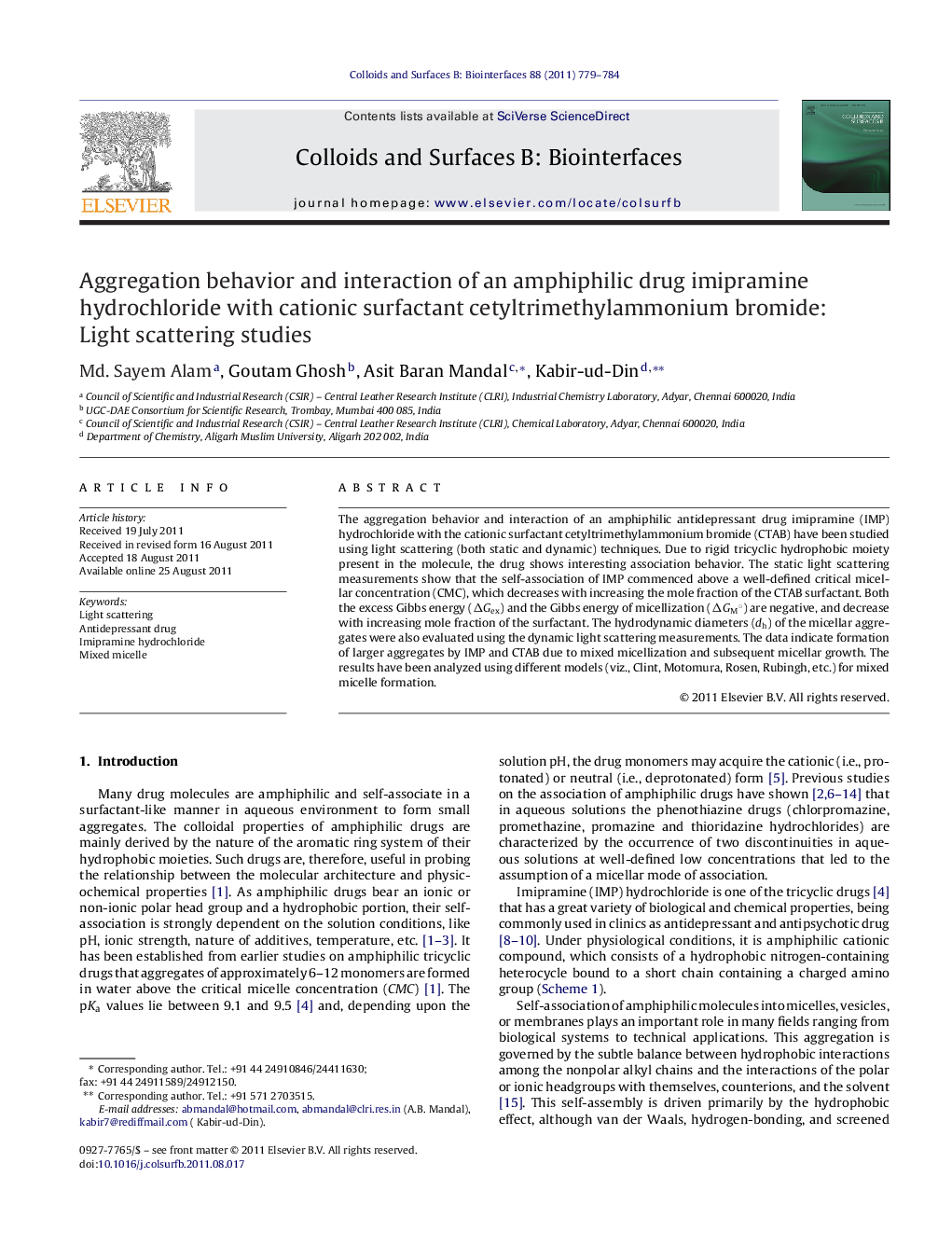| Article ID | Journal | Published Year | Pages | File Type |
|---|---|---|---|---|
| 601127 | Colloids and Surfaces B: Biointerfaces | 2011 | 6 Pages |
The aggregation behavior and interaction of an amphiphilic antidepressant drug imipramine (IMP) hydrochloride with the cationic surfactant cetyltrimethylammonium bromide (CTAB) have been studied using light scattering (both static and dynamic) techniques. Due to rigid tricyclic hydrophobic moiety present in the molecule, the drug shows interesting association behavior. The static light scattering measurements show that the self-association of IMP commenced above a well-defined critical micellar concentration (CMC), which decreases with increasing the mole fraction of the CTAB surfactant. Both the excess Gibbs energy (ΔGex) and the Gibbs energy of micellization (ΔGM°) are negative, and decrease with increasing mole fraction of the surfactant. The hydrodynamic diameters (dh) of the micellar aggregates were also evaluated using the dynamic light scattering measurements. The data indicate formation of larger aggregates by IMP and CTAB due to mixed micellization and subsequent micellar growth. The results have been analyzed using different models (viz., Clint, Motomura, Rosen, Rubingh, etc.) for mixed micelle formation.
Graphical abstractFigure optionsDownload full-size imageDownload as PowerPoint slideHighlights► Aggregation/mixed micellization of IMP drug with CTAB has been studied by SLS/DLS. ► The SLS measurements show that the self-association of IMP commenced above CMC. ► The CMC value decreases with increasing the mole fraction of the CTAB surfactant. ► Both ΔGex and ΔGM° are negative, and decrease with increasing mole fraction of CTAB. ► The hydrodynamic diameters (dh) of the micellar aggregates were evaluated using the DLS measurements.
